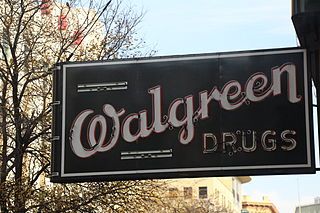From Guest Blogger Blake Meredith: Make Your Business into a ‘Net Zero’ Workplace
We’re reaching the closing months of 2013, a year that many were afraid would never even occur (we can recall the craze of December 2012, despite zero scientific evidence the world would end). Luckily, 2013 not only happened, but also brought a corporate push toward renewable energy that will hopefully continue to spread. Earlier this year Walgreens announced it will be building the nation’s first zero net retail building. For the first time, customers will be privileged enough to shop in a major retail store with zero net energy consumption. More recently, in September Google purchased an entire wind farm in Texas to counteract its own carbon emissions.
Businesses are a necessary support in the renewable energy campaign – especially those whose offices house hundreds or thousands of employees for eight to twelve hours a day. But even though it is the large corporations with significant amounts of property that contribute the most to unwanted carbon emissions, and can thus make the biggest impact by reducing their energy consumption and waste output, it’s still important for small to medium sized workplaces to work towards zero net energy status as well.
Even if you’re not an owner or CEO, there are still ways to encourage your company to begin conversion into a green building. Rented spaces may require discussions with property owners, but chances are they could be too busy to install or consider renewable energy sources, and an offer of help from your end might provide the necessary push. Installation of solar panels, thermal heaters, and other energy taps can be pricy, but creating an energy plan that involves selling excess energy back to the grid through companies like Direct Energy can mitigate financial losses and even allow a business to break even (the zero net ideal) or potentially profit. Once the topic of renewable energy has been acknowledged in the workplace, go greener a few steps at a time, in a similar fashion to how other goals would be approached in the office.
Evaluate your Current Workplace: Examine your workplace and evaluate it for any areas where energy efficiency could be improved. Pinpoint the biggest energy wasters, as well as the easiest to fix, looking to where you have unnecessary electrical usage or rarely occupied areas of the office.
Change your Behavior and Help Educate your Employees: This can be as simple as turning off the lights when you leave your office or the break room. Timers are relatively inexpensive, and can be installed to turn off after five (or six, or seven). A few signs placed outside bathroom and conference door rooms can stand as friendly reminders. Remind your coworkers that leaving computers in standby mode overnight could be adding to a hefty energy bill.
Fill in the Gaps: A whopping 40% of the unwanted heat that comes into your office is arriving through the windows. When it’s time for new windows, suggest installing some with a high R-value. As a quick fix, consider slatted shades that can either let the warm winter sun in or keep the hot summer sun out. Proper insulation in the roof, walls and basement of your business can seal up the office and save energy. You’d be surprised how energy efficient a run to Home Depot for some quick window insulation and draft stoppers can prove.
Install Compact Fluorescent Light Bulbs: CFL bulbs last 7 to 10 times longer and use one fourth of the energy of a normal incandescent light bulb. Added up that means a $20-$30 savings over the lifespan of a single bulb, and when all bulbs in your workplace are replaced, the result is a significantly higher amount of unused dollars available for holiday bonuses.
Buy a Solar Water Heater: Depending on your business’s size and number of employees a solar powered water heater can easily provide enough hot water to withstand warm hand washing throughout the day. You can also consider low-flow faucets for the bathrooms and kitchen, if the opportunity presents itself.
Update Appliances: If your office recently purchased a new appliance in the last few years, chances are it’s pretty energy efficient, but appliances like microwaves, refrigerators and air conditioners creeping on 7 to 10 years old might be due for an update. Energy efficient technology has boomed in the last decade, and old appliances aren’t worth the cost their inadequacies add to the bill.
Turn on the Ceiling Fans: It almost goes unsaid that offices should minimize the use of A/C and heat when the weather cooperates, but using ceiling fans is an additional help. Run them in different directions depending on the season. In the winter, set the fans to run counterclockwise, which looks clockwise from the ground, in order to redirect the warm air from the ceiling to the lower, occupied space. Do the opposite in the summer in order to reduce the need for air conditioning.
If you have the capabilities and the funds, consider high-tech solutions like solar micro-inversion, which converts Solar PV power from direct current (DC) to utility compatible alternating current (AC) in residential and commercial spaces. The most important task, though, is to encourage your business to begin exploring renewable energy and conservation in the workplace. Any improvement, no matter how slight, is a step toward self sufficient buildings and the expansion of zero net workplaces.

